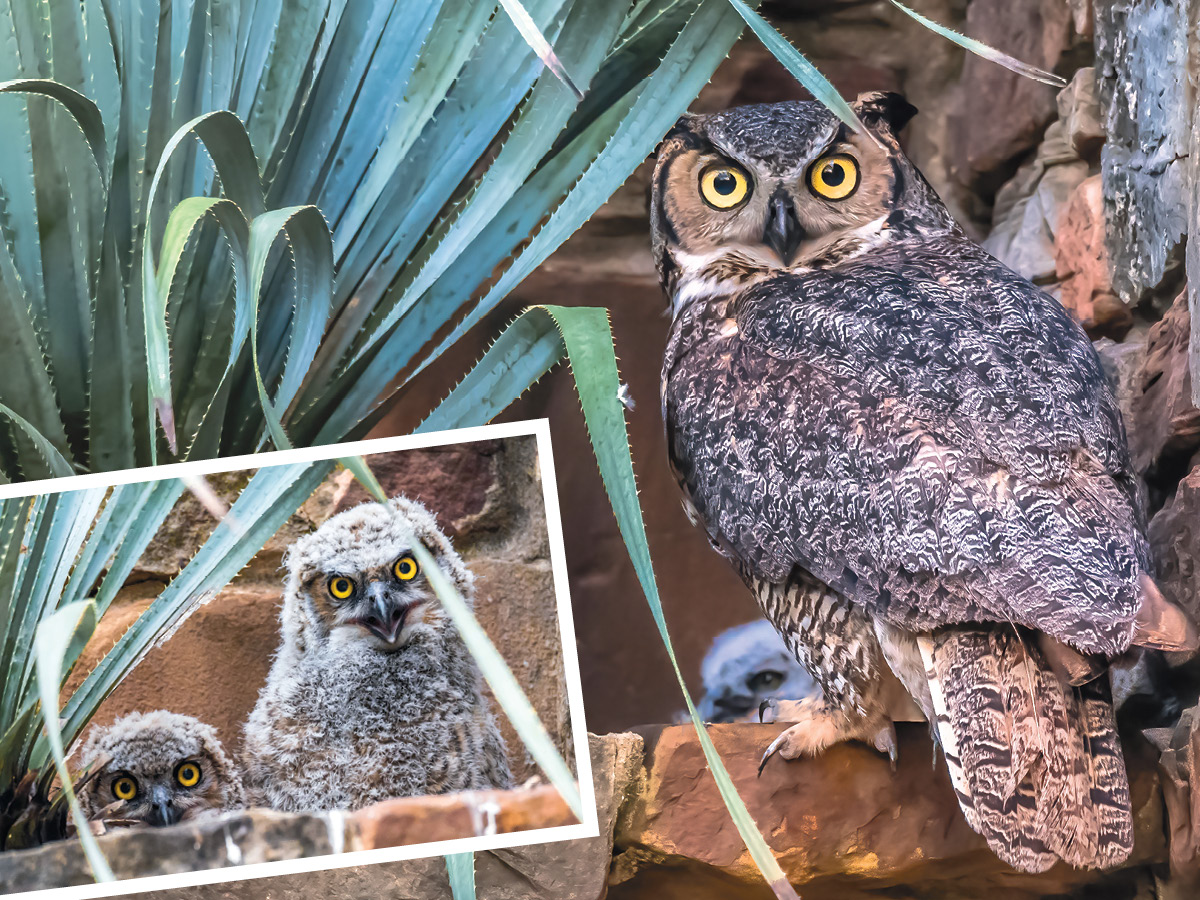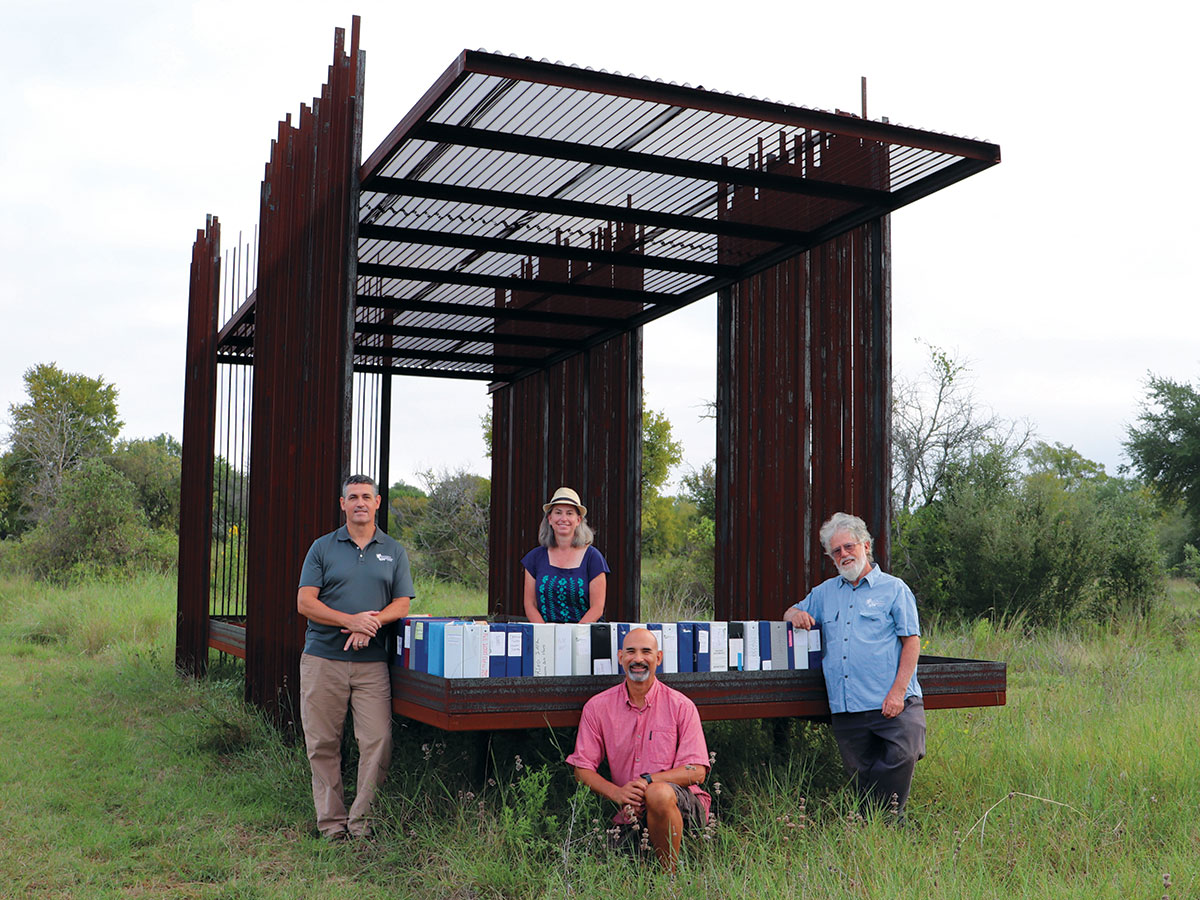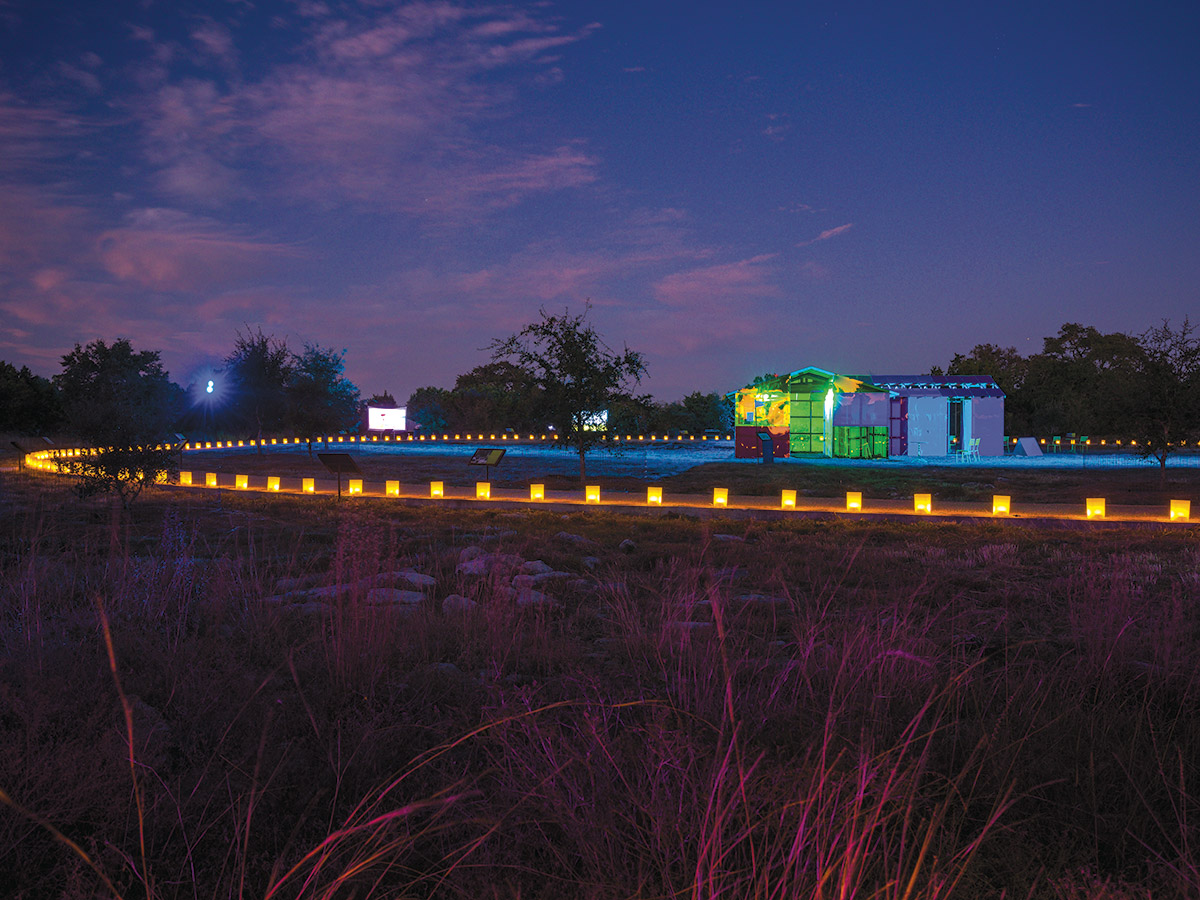Centered: Spring/Summer 2021

Athena and her owlets. PHOTOS Bill J. Boyd
Nest in Show
In springtime, it’s not uncommon to walk near the Wildflower Center’s Wetland Pond and see a volunteer or staff member standing with a guest and pointing up. Suddenly, the guest’s face brightens, their eyes grow large, and a smile or “wow!” expression forms. This is the moment when they spot Athena and/or her babies.
A beloved great horned owl (Bubo virginianus), Athena has been nesting at the Wildflower Center since 2009. Her first two years on site, she unsuccessfully attempted to rear her owlets in planted nooks along our iconic Observation Tower.
By 2011, she had discovered her nursery of choice, an elevated sotol (Dasylirion wheeleri) planter (pictured above) in the corner opposite the pond. She has raised a brood (usually one to three owlets) at the Center ever since. Athena’s seasonal visits typically range from arrival in February through her owlets fledging in late April or early May.
At press time, it was too early for us to know if Athena would grace the Center with her presence yet again. If she arrives and successfully rears more owlets this spring, it will make a decade of owl motherhood at the Wildflower Center.
For more on Athena, visit this page.

FROM LEFT Director of Land Resources Matt O’Toole, Ecologist Michelle Bertelsen, former Center Conservation Ecologist Hans Landel and Land Steward Dick Davis show off the many binders of data collected by Center staff and volunteers over nearly 20 years. PHOTO Joanna Wojtkowiak
Digging Into Data
Wildflower Center researchers and land managers have been burning, mowing and counting plants in the same patches of land since 2001. Sound redundant? It is, but it’s also resulted in a hugely important data set.
The goal is to assess how land management strategies, such as burning or mowing in different seasons, influence the plant community. Data is collected via regular vegetation surveys across roughly 70 acres known as the Hill Country Trails area, an effort that relies heavily on volunteers. Michelle Bertelsen, an ecologist at the Center, says it’s “difficult to convey the massiveness of this data set and why it’s so valuable.”
Enter Dr. Sean Griffin, a postdoctoral researcher in the lab of Dr. Shalene Jha in The University of Texas at Austin’s Department of Integrative Biology. Griffin studies the effects of large-scale restoration on the pollinator communities of grassland ecosystems; lately, he’s been analyzing the Center’s epic plant data, looking for trends. “Data sets like this — nearly 20 years of continuous observation — are extremely rare,” says Griffin, “but invaluable for studying long-term processes like climate change, management and invasion by non-native species.”
The study is trying to determine the effectiveness of various treatments at achieving key restoration goals. “We want to give land managers more nuanced insights into how whole communities and individual species respond,” says Bertelsen. Griffin adds that it’s “exciting and gratifying” that information gleaned from this study is already helping guide the decisions of land managers in the Austin area.
Analyzing this data after roughly two decades of careful collection at the hands of hundreds of volunteers and many staff members feels “pretty special,” according to Bertelsen. “We have well over 200,000 observations, sampled from 14,578 quadrats, and we only had to throw away 800 data points. I’m proud of that.”
These efforts — collectively known as the Hill Country Research Program — will ultimately identify techniques that are effective in restoring and sustaining native plant communities which can then be demonstrated to landowners and guests. In other words, we’re drawing evidence-based conclusions with the intent to share that knowledge and, ultimately, improve the way people manage landscapes.

Community Garden fort at sunset during Luminations PHOTO Josk Baker/AzulOx Visuals
Lights Fantastic
Forts such as Community Garden (pictured above), from Fortlandia 2020-21, got encore treatment at our most recent Luminations, when the festive light display and celebration of winter’s natural beauty moved to the Texas Arboretum for the first time. The change facilitated more space and a one-way flow, allowing guests to safely enjoy time outdoors during the pandemic. Along with illuminated pathways and trees, lights decorated select forts from our third Fortlandia, a collection of creative structures by local artists, architects and designers (such as Letterpress PLAY, creators of the above fort). Art installations enhanced the experience, along with free hot chocolate for members and treats from Wildflower Café.
Fuel Gauging
We’re experts on native plants, sure. But the Wildflower Center is known — and often employed for — other skills, as well. One of those is our knowledge of prescribed and natural fires, including how to best manage landscapes to avoid uncontrolled wildfire. To that end, Wildflower Center staff is joining forces with Texas A&M Forest Service to implement a campus wildfire protection plan at McDonald Observatory in Fort Davis, Texas.
The Observatory, like the Wildflower Center, is a unit of The University of Texas at Austin. According to Texas A&M Chief Regional Fire Coordinator Rich Gray, “The University of Texas and the Texas A&M Forest Service have a long history of working together to reduce the risk of wildland fire and protect the facilities and residents at the Observatory.”
Wildflower Center Director of Land Resources Matt O’Toole says, “The protection measures to the surrounding landscape are based on national standards as well as fire effects of naturally occurring and prescribed fires in the region. A core tenant of the National Cohesive Wildland Fire Management Strategy is resilient landscapes that are managed to withstand disturbances.” The assessment and recommendation period concludes in August 2021.

